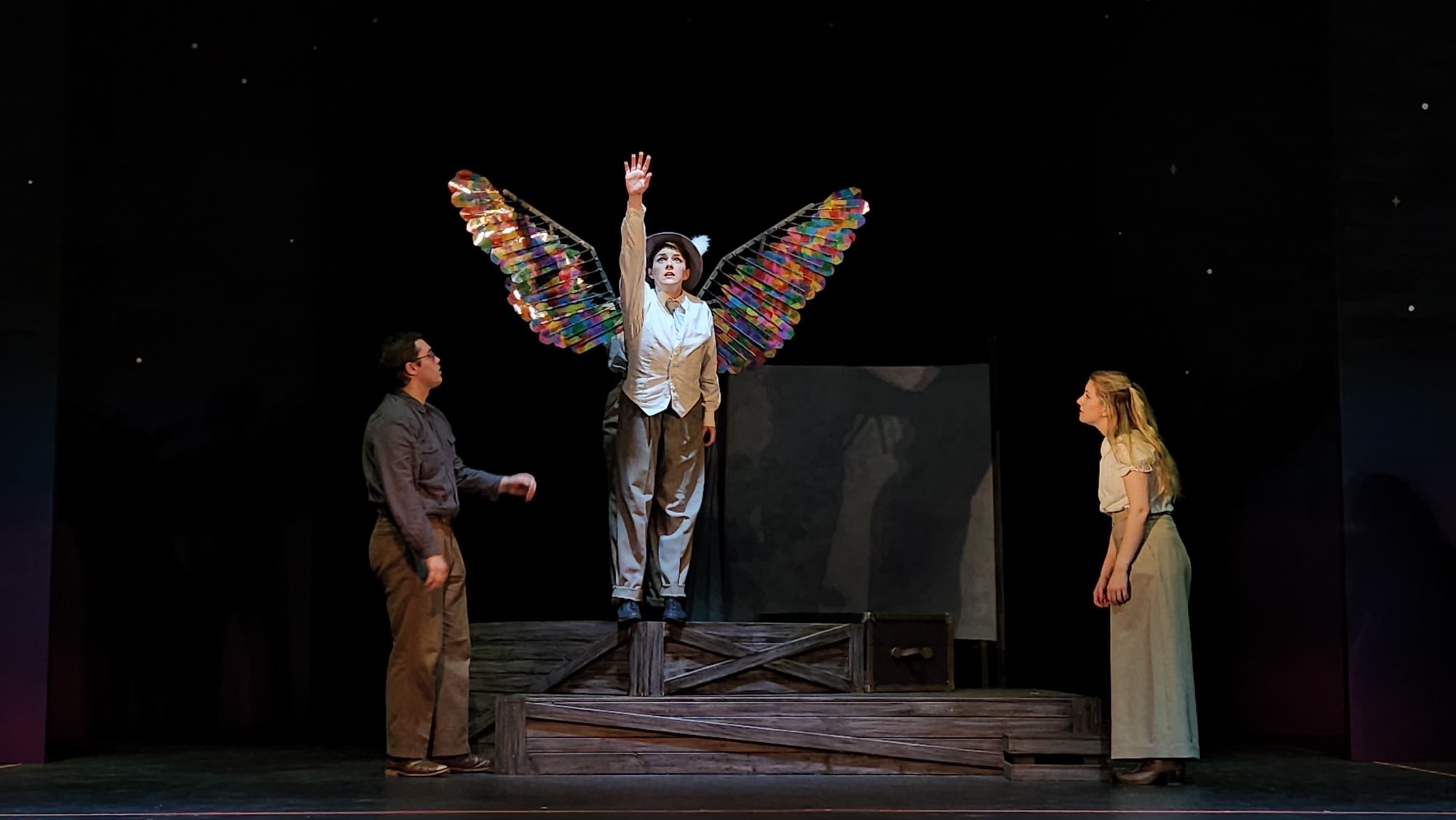Children’s stories are frequently dismissed as simplistic and not worth an adult’s time. Indeed, sometimes they are two-dimensional; but, as iconic fairy tales and Pixar classics have proved, there are numerous exceptions. One of these is certainly “The Miraculous Journey of Edward Tulane,” adapted by Dwayne Hartford from a story by Kate DiCamillo. Last Sunday, May 14 in Stansbury Theater, the play was given two tremendous performances. The two separate casts featured students from Lawrence University under the direction of Professor of Theatre and Drama and Associate Professor of Theatre Arts Kathy Privatt and stage manager Jana Casey.
The story follows a china (porcelain) rabbit named Edward Tulane as he passes from owner to owner. He begins as the property of ten-year-old Abilene, who adores him but loses him aboard an Atlantic voyage. Quickly he travels between owners: a humble family, a sick little girl and a poor man, among others. In an emotional resolution, he is reunited with the now-adult Abilene after a lifetime of profound experiences.

The two casts were a tight group. The 10:30 a.m. show featured sophomore Ella Rose Schaefer, senior Maeve Shaffer, sophomore Nina Broberg and junior Jonathan Winkler, while the 2:30 p.m. show featured seniors Madeline Guest, Alec Welhouse and Lexi Praxl and junior Hannah Amell. Each performer doubled a multitude of roles, sometimes switching in mere seconds.
As a children’s show, the plot was cleverly devised. It featured goofy predicaments right alongside meaningful morals, all delivered excellently by the cast. Guest spoke of how the cast was extra cognizant of avoiding lulls due to the short attention spans of most children. Even dramatic pauses in emotionally intense scenes were lessened. Guest recalled that her director commented, if you “drag them down there, you’re not gonna get them back.”
Every quick-moving aspect of the production was designed with an audience of children in mind. There were frequent costume changes, though some were required by the necessity of a small four-person cast. The logistical challenges of so many costume changes in tandem with each other is often overlooked, but they were expertly assembled and created by first-year Mercury Thornton, sophomore Jordan Wallin-Swanson and junior Zhanna Weil.
The set, too, created by senior Elliot Odette, was simultaneously practical and effective. Both casts visited a school to perform, so portability was essential. Two platforms and a white backdrop formed the set’s crux and allowed it to act as a boat, store, house, wall, hiding place for props and even a shadow puppet background.

For music, the group picked a laid-back vibe. Instrumental songs occurred during the opening and end, but mainly in transitions. Guitar was the center, but violin and harmonica also appeared. Unfortunately, the music did not offer a very distinct character and was treated as no more than background sound.
Among the show’s many themes was self-growth. Edward begins the show as selfish, a characteristic which was effectively brought out by Welhouse, who voiced the rabbit. As the story progresses, he learns to love more and more. By the end, he is drowning in love, to the point that he claims he has no more to give. Upon a near-death experience and self-reflection, he concludes that he does indeed have love to offer.
Edward becomes a fixation for the many people who discover him. The homeless pass him around, telling their stories and recalling their kids, whom they left to find work. He goes through many different names in the show—Susanna, Malone, Clyde, Jangles—and adopts many roles, serving as a companion, friend, family member, source of company and even a puppet dancer.
Yet many of these stories shared with Edward are played out directly for the audience. DiCamillo does not shy away from hard truths, according to Guest. She recalled being nearly pushed to tears upon her first time reading the script.

Indeed, many of the stories discuss fear, sickness and loneliness in plain terms. One features Sarah Ruth, an especially ill young girl. Upon her eventual death, Edward is left to face questions of loss, pain and death, all alongside the audience.
But this despair is not an end in itself. With each sad story, DiCamillo offers a clear purpose and lesson. Guest noted that in her correspondence with the cast, DiCamillo explained that “Our job is to tell the truth and make it bearable.”

